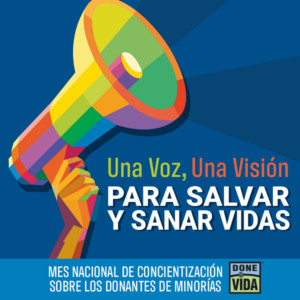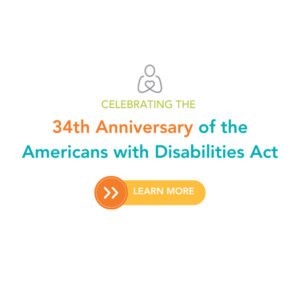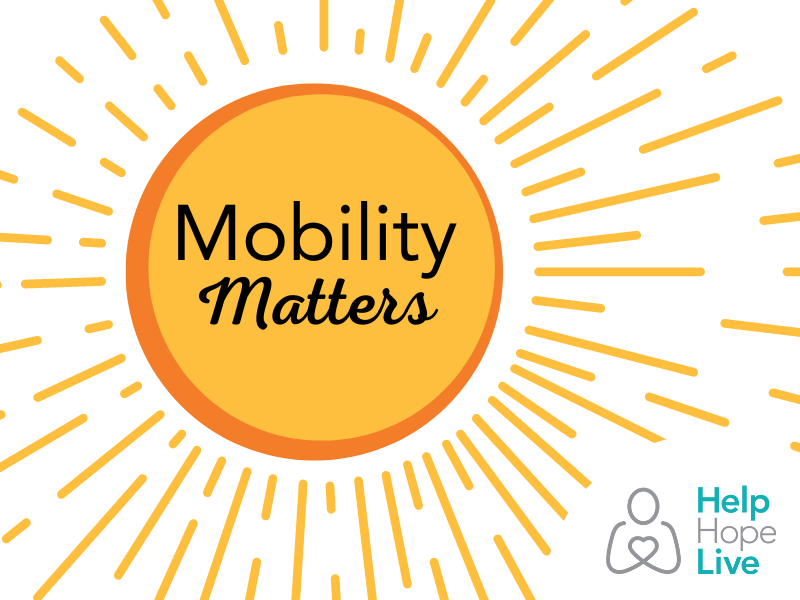
May is National Mobility Awareness Month.
Mobility Month is a time to recognize the power of mobility and accessibility to enhance lives, improve health and care, and connect individuals to their communities.
At Help Hope Live, we provide trusted medical fundraising that helps individuals bring mobility and accessibility essentials within closer reach. That’s why we celebrate Mobility Awareness Month every year.
In this post, learn why and how we celebrate Mobility Awareness Month, and discover our Mobility Matters series of interviews with individuals living with diagnoses that impact mobility and access.
Note: all the photos you see in this post are real Help Hope Live fundraising clients and their communities. These clients have granted us permission to use their photos.
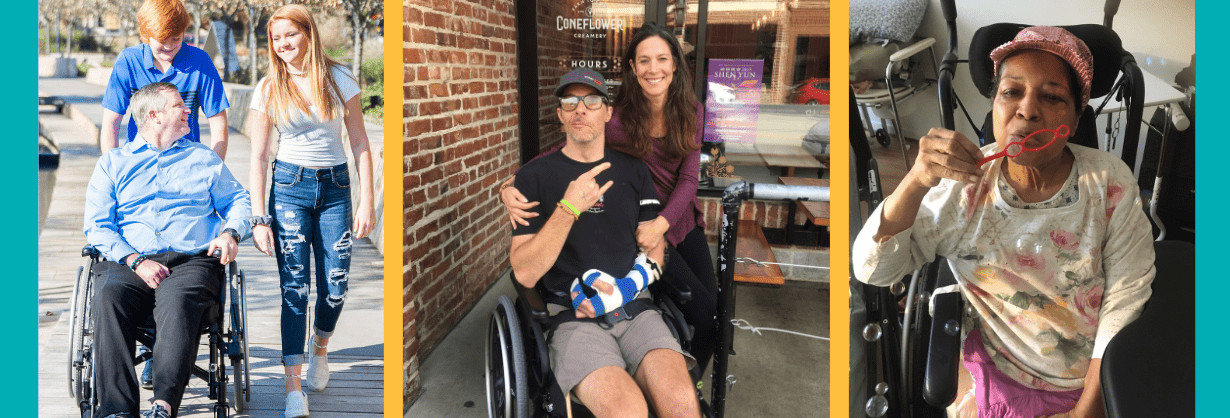
What Is Mobility Awareness Month?
In 2012, the National Mobility Equipment Dealers Association (NMEDA) established National Mobility Awareness Month.
Mobility Awareness Month encourages support, awareness, and education around the impact of mobility on the lives of these individuals as well as their caregivers and communities.
Mobility Awareness Month is a time to recognize that people with mobility-impacting disabilities or diagnoses are a huge part of our society. As the CDC reports:
12% of American adults have a mobility-impacting disability.
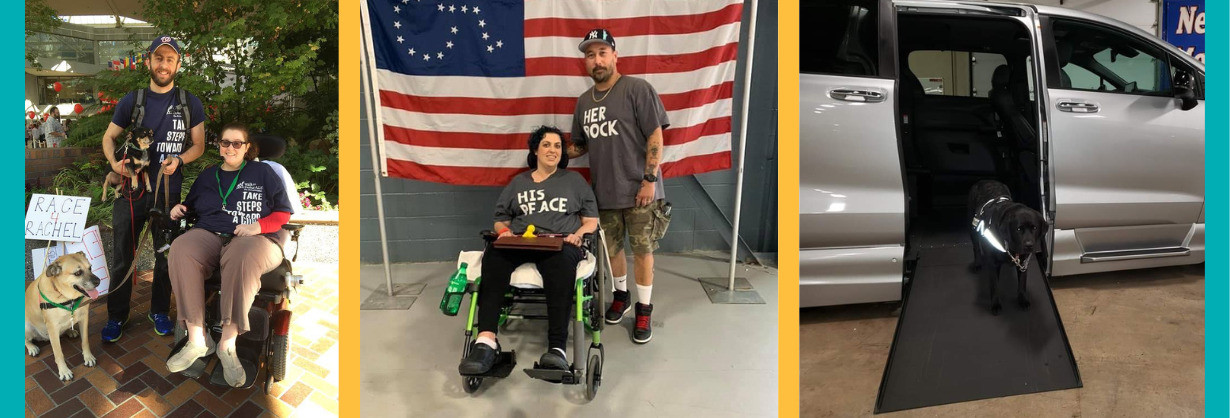
Mobility Is More Than Movement
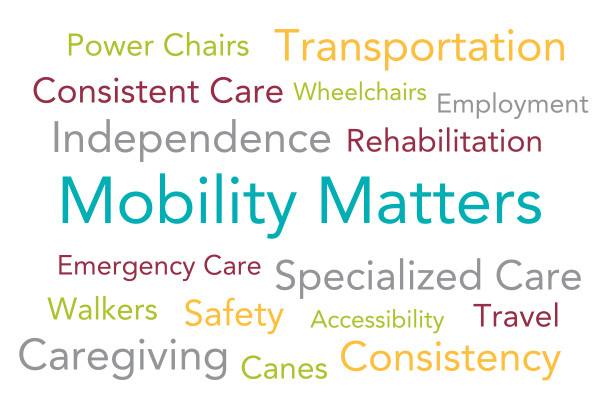
Mobility can represent more than someone’s ability to walk, move independently, or complete tasks without assistance.
Mobility is reliable access to medical care.
Mobility is the power to physically access medical providers and emergency care when you need them.
Mobility is safe transportation.
Mobility means accessing consistent, reliable, and safe transportation that accommodates the devices you use for mobility, including walkers, canes, wheelchairs, power chairs, and prosthetics.
Mobility is protection from mobility-impacting health risks.
Many individuals living with disabilities need specialized care and equipment to keep their bodies strong and prevent muscle deterioration, pressure sores, blood pressure drops and spikes, and other significant health risks.
Mobility is life-changing therapy and rehabilitation.
For a diverse range of diagnoses, access to consistent therapy or exercise-based rehabilitation may significantly enhance health and mobility.
Mobility is accessibility.
Full participation in daily life and your community may depend on your ability to access locations safely without risks to your safety.
Accessibility means consistent access to tools, assistive technology, workplace modifications, and other life essentials. Accessibility often depends on creating spaces, devices, and web standards that don’t demand a certain level of personal mobility for access.
Accessibility also ties in closely to ableism, or discrimination against people with disabilities based on the bias that people without disabilities are more capable or more deserving.
When workplaces, public spaces, and digital platforms are designed prioritizing people without disabilities, they become or remain inaccessible, creating consistent barriers to access, mobility, health, travel, work, and other facets of life.
Mobility is access to devices and medical equipment.
Individuals with disabilities rely on a wide range of devices and medical essentials to access consistent care and live life fully.
Specialized medical equipment, home health care, and a wide range of devices can contribute to maximizing daily mobility and reducing limitations.
Mobility is support for caregivers.
Mobility often impacts not just one person but their entire community of support, including their caregivers.
Without the right equipment, transportation, and support, caregivers may take on personal risks just to provide consistent care.
Mobility is freedom and independence.
Mobility matters because mobility represents so much more than any one single concept of movement.
For so many people, mobility means freedom and greater independence—enabling community access, new opportunities, better health, travel and connections, recreation, exercise, communication, work opportunities, daily life satisfaction, and more.

How We Celebrate Mobility Awareness Month
For our nonprofit, Mobility Awareness Month is the time to help improve understanding of why mobility matters while highlighting how fundraising can help place mobility-enhancing equipment and services within reach.
Our annual Mobility Matters blog post interview series shares firsthand perspectives from the Help Hope Live community on life with a mobility-impacting diagnosis.
Subscribe to this Latest blog so you can receive an email when we post a new Mobility Matters interview.

The Financial Burden of Mobility
Greater mobility is a source of hope and health for millions of Americans and thousands of individuals in the Help Hope Live community.
However, mobility often comes with substantial out-of-pocket expenses that individuals and families can’t cover without help.
That’s why our nonprofit provides fundraising support that extends a financial lifeline to individuals living with mobility-impacting diagnoses.
Examples of Out-of-Pocket Mobility Costs
Here are just a few examples of mobility costs that are often not fully covered by insurance:
- Exercise-based rehabilitation and other therapies
- Surgery and hospitalizations
- Medical travel
- Caregiving and home health care services
- Home modifications for accessibility
- Safe accessible transportation, such as a wheelchair van
- Assistive technology
- Customized prosthetics
- Specialized wheelchairs and other durable medical equipment
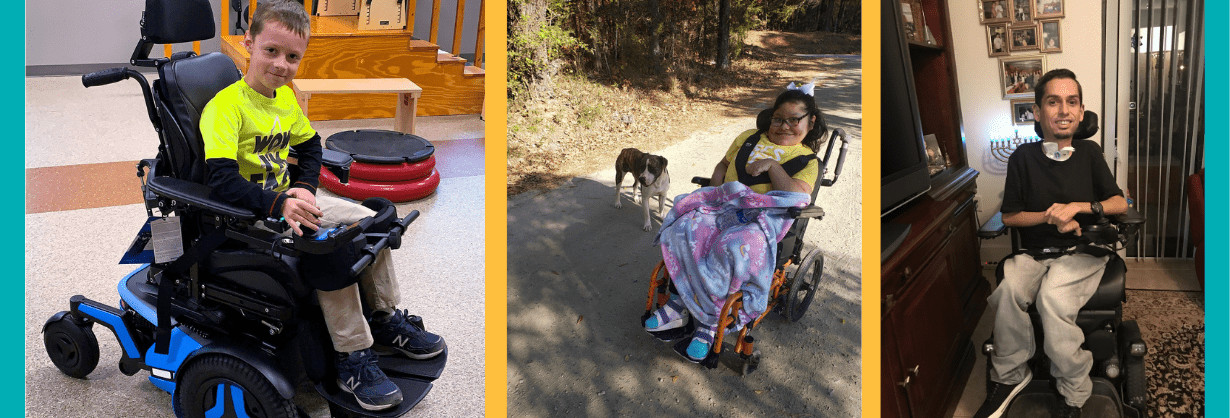
Get Financial Help for Mobility with Fundraising
Since 1983, Help Hope Live has been dedicated to helping individuals and families impacted by a life-changing diagnosis to fundraise for medical and related expenses, including mobility essentials not fully covered by insurance.
We provide trusted medical fundraising with one-on-one support, medical verification, tax-deductible donations, and maximum protection for state-based benefits.
Written by Emily ProginApply today to help yourself or someone you love with mobility costs, medical expenses, and more:

